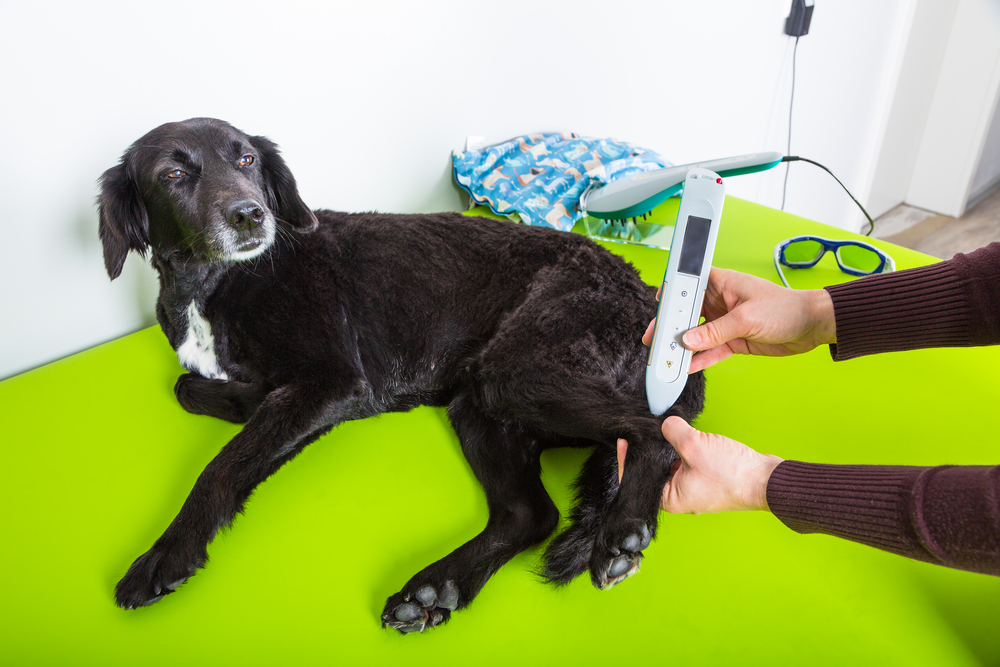If your pet is experiencing certain painful health issues, there is a promising veterinary trend that is becoming more readily available for pet parents. This new technology is called laser therapy, and it’s helping to support all kinds of procedures from ear infections to surgery. But what are pet laser treatments and how do they help your pet? Let’s take a closer look.
Cold Laser Therapy – A New Frontier in Pain Relief
Although there is still lots of work to do insofar as building a body of evidence-based scientific literature around the cold laser technology, the results that are being shown in practice are widespread and eagerly adopted. Cold laser therapy is now a new treatment option available for veterinarians to use when other kinds of treatment need more support.
Rather than cutting into flesh like a surgical laser, cold laser therapy works with another kind of process. A naturally occurring chemical reaction, called ‘photobiostimulation,’ is the result of this deep-penetrating light technology. This process helps to release endorphins and triggers an accelerated healing response in injured cells.
This process of pain relief is due to the lowering of inflammation through vasodilation – the opening of the blood vessels – as well as through activating the lymphatic drainage system, and finally by stimulating the nerve cells that block pain signals to the brain. The result is less pain due to more blood flow, increased drainage of swollen areas, less pain signaling to the brain, and a natural release of endorphins.
What Can Cold Laser Therapy Help With?
Because this is still an emerging technology, there are still lots of treatment options that are still yet to be discovered. Even so, there is currently a wide range of uses that can be of great benefit to your pet under certain conditions. Laser therapy can currently help treat the following conditions:
● Injuries to tendon, ligament, and muscle
● Healing from surgery
● Soft tissue trauma and open wounds
● Problematic back pain
● Degenerative disc disease
● Dental disease
● Anal gland infection
● Ear infection
● Hot spots
● Arthritis, joint pain, hip dysplasia
Keep in mind that this list only contains the ailments that have currently been shown to respond well to cold laser treatment. As more techniques are discovered and communicated throughout the veterinary community, more can be added to the list.
Is Laser Therapy Painful?
This is a common question – for a good reason! The idea of using a laser can trigger the darker side of the imagination in a concerned pet parent. The good news is that cold laser therapy is completely pain-free. In fact, it actually feels really good and will often cause a relaxation response during the treatment. As the pain dissipates during the treatment, your pet experiences more and more relaxation.
In a post-surgical setting, wherein your pet has undergone a traditional incision-and-suture style procedure, the healing process can be expedited by using cold laser therapy directly on the site. This has been shown to improve muscle and tissue strength, improve post-operative mobility, and improve the overall quality of life. In minor surgeries, this may enough to alleviate pain and encourage a speedy healing response.
Another point to bring up is that there are no known side effects of cold laser treatments. It is widely considered a safe and effective treatment option across the entire veterinary community.
What Happens During A Cold Laser Treatment?
During a cold laser treatment, the technician will hold a special wand (the cold laser device) over the affected area. This process lasts between three and ten minutes and is typically a relaxing experience for your pet. In some cases, you’ll even find your pet falling asleep during the procedure.
Final Thoughts
So, what are pet laser treatments? They are an excellent way to make sure your pet is pain-free faster and non-invasively. There are many uses for this promising technology, and the widespread adoption can help to make sure you can employ this service when you need it the most. Have you had your annual wellness visit yet? If not, give us a call, and we will happily go over all of this and more with you. We are always here to make sure your pet gets the best care possible.


